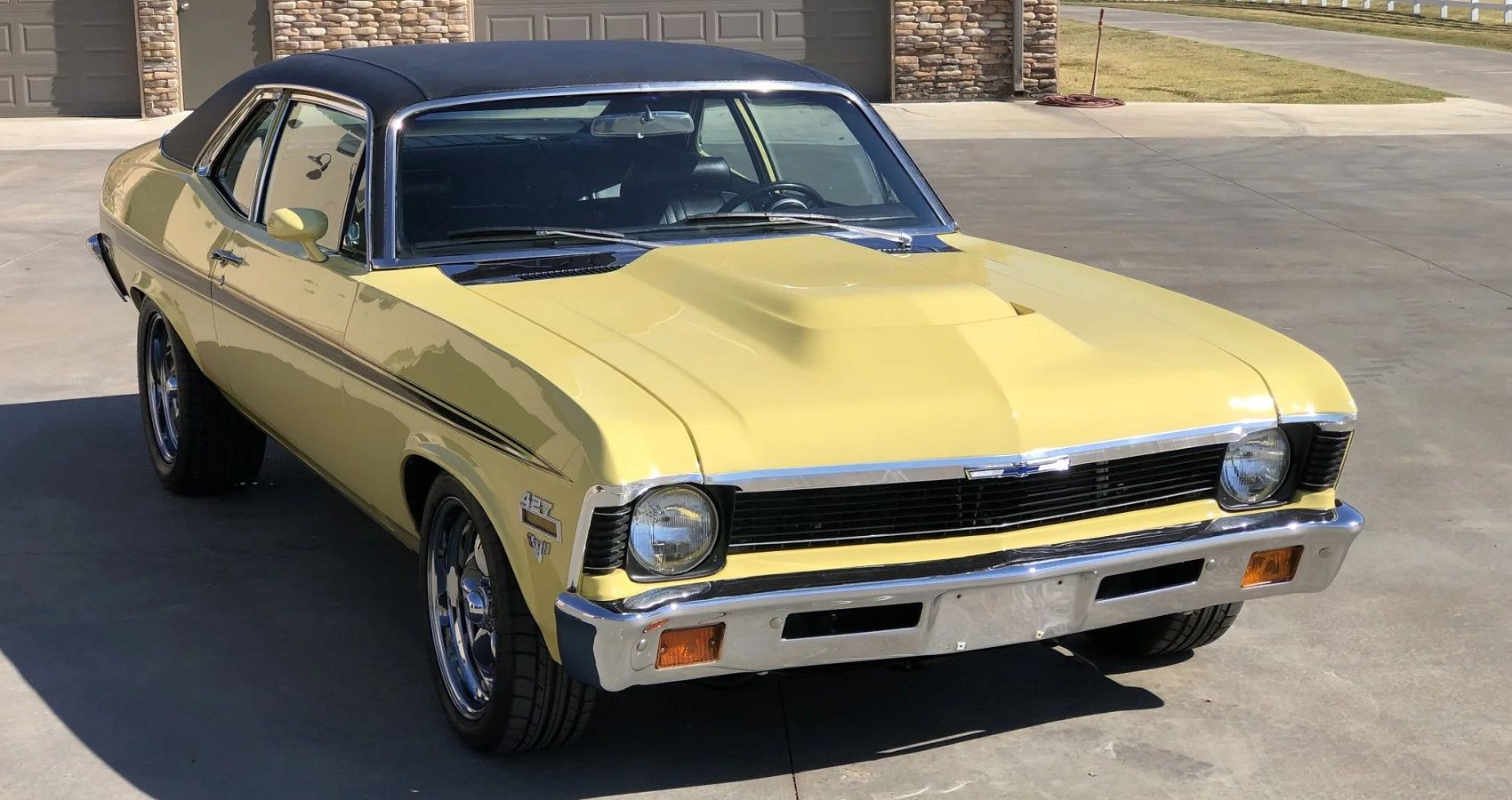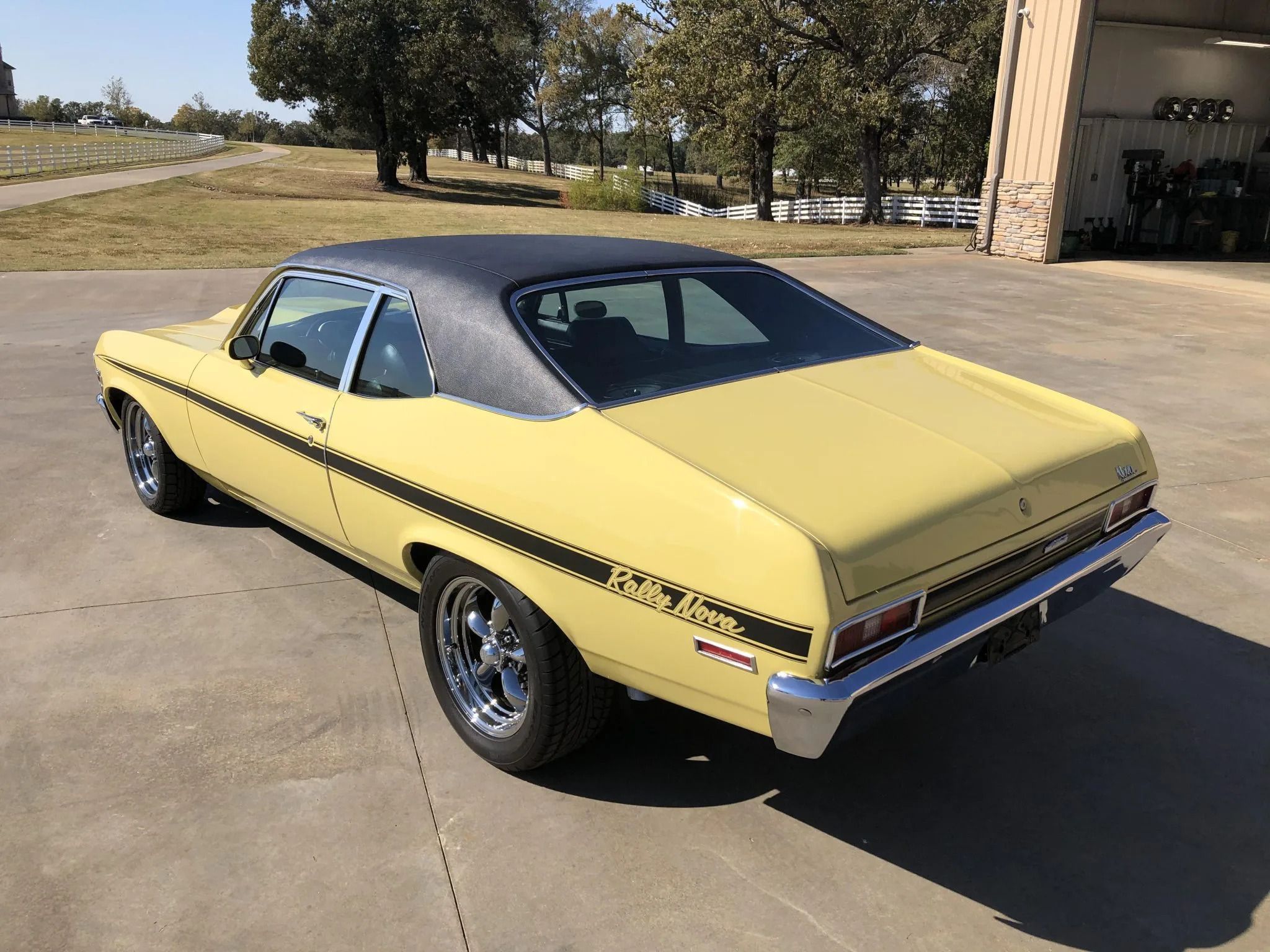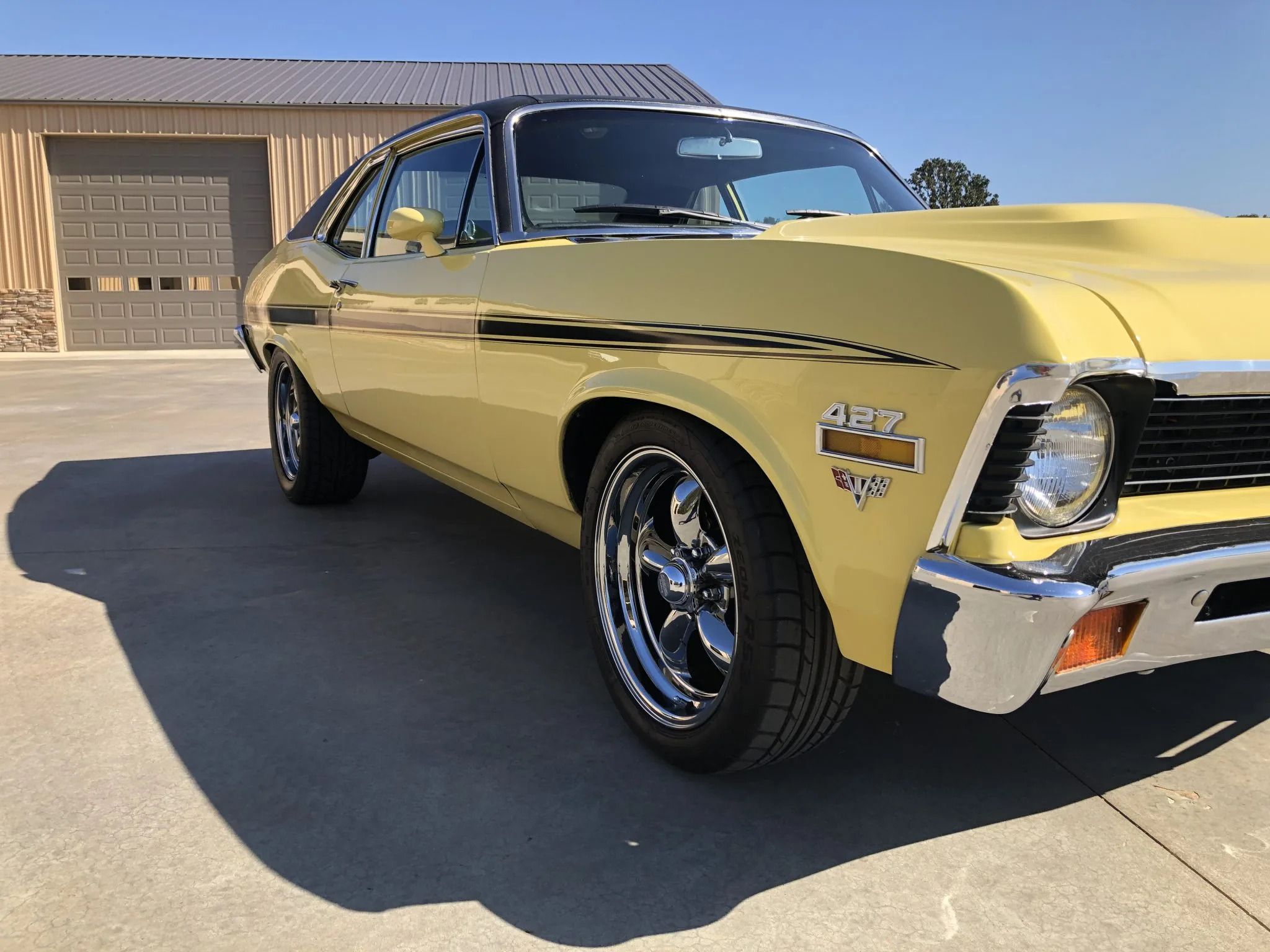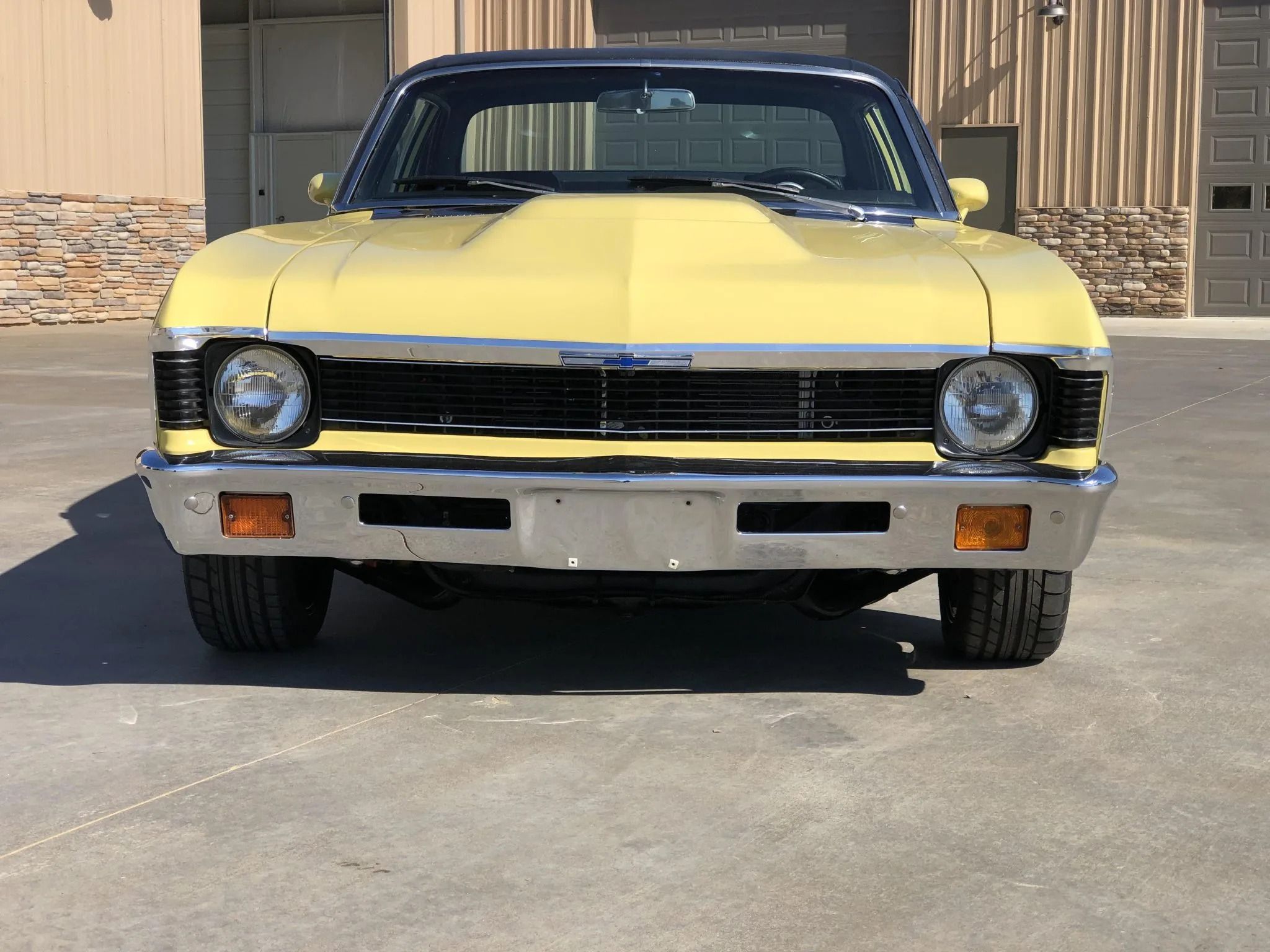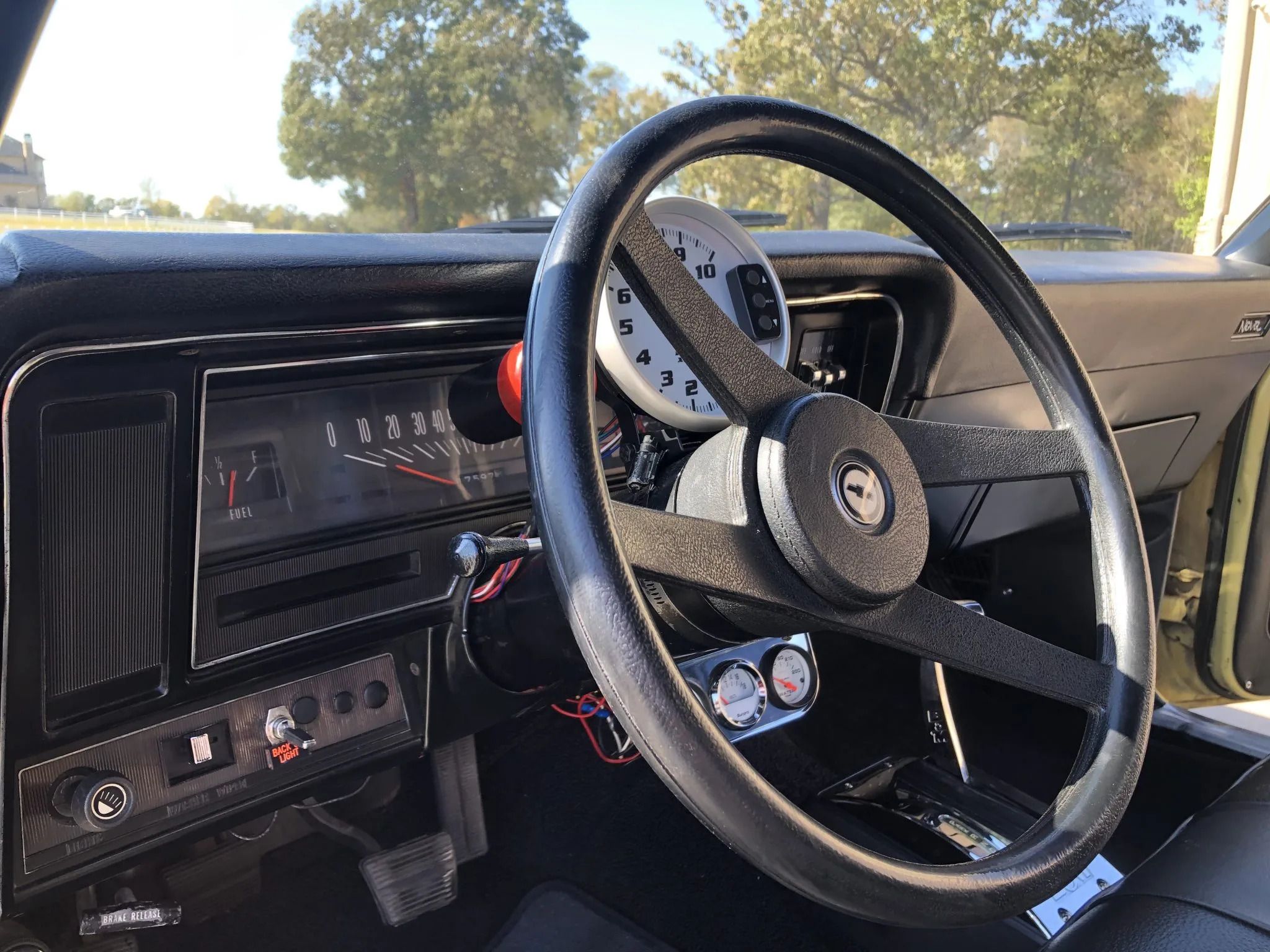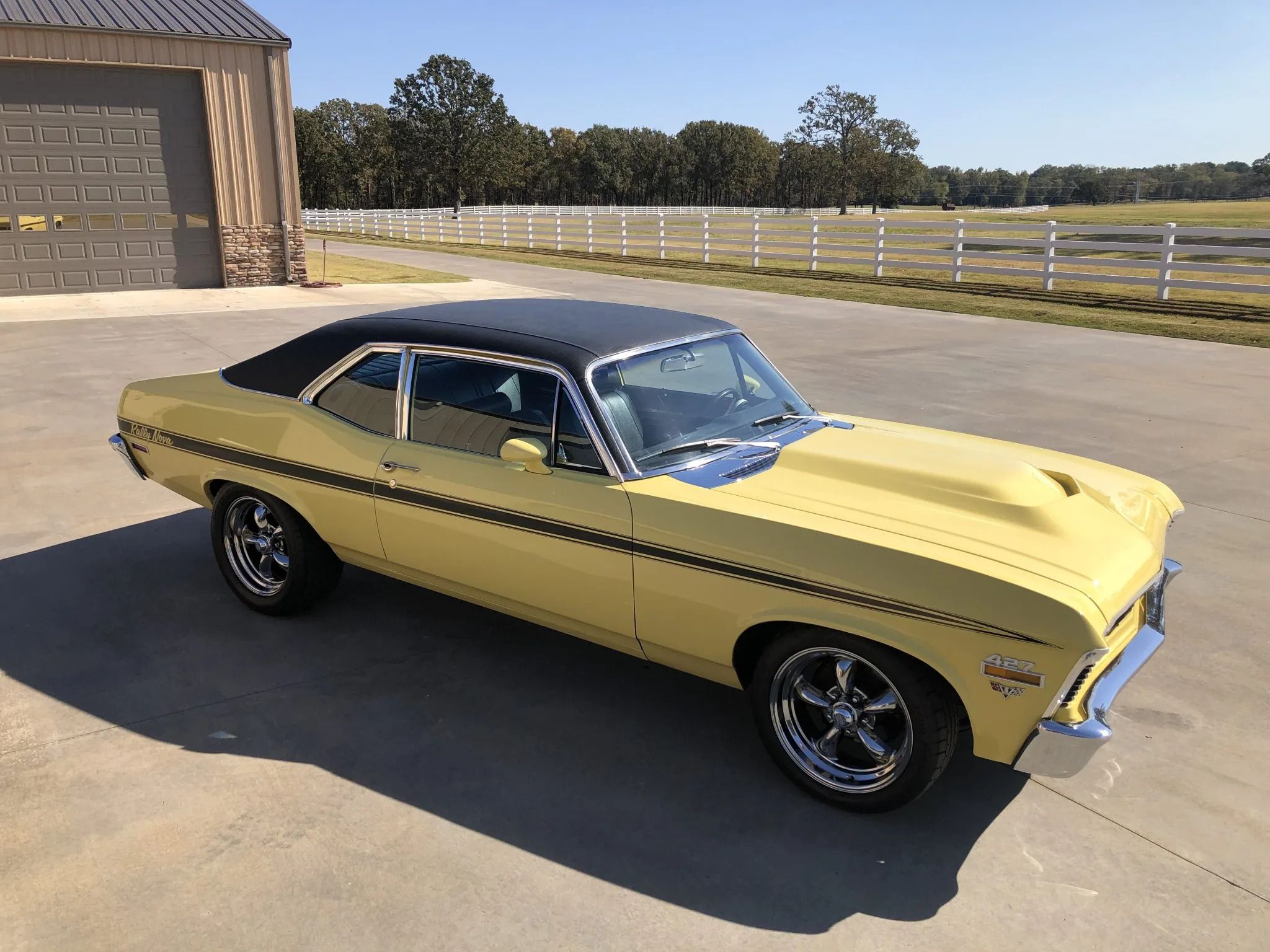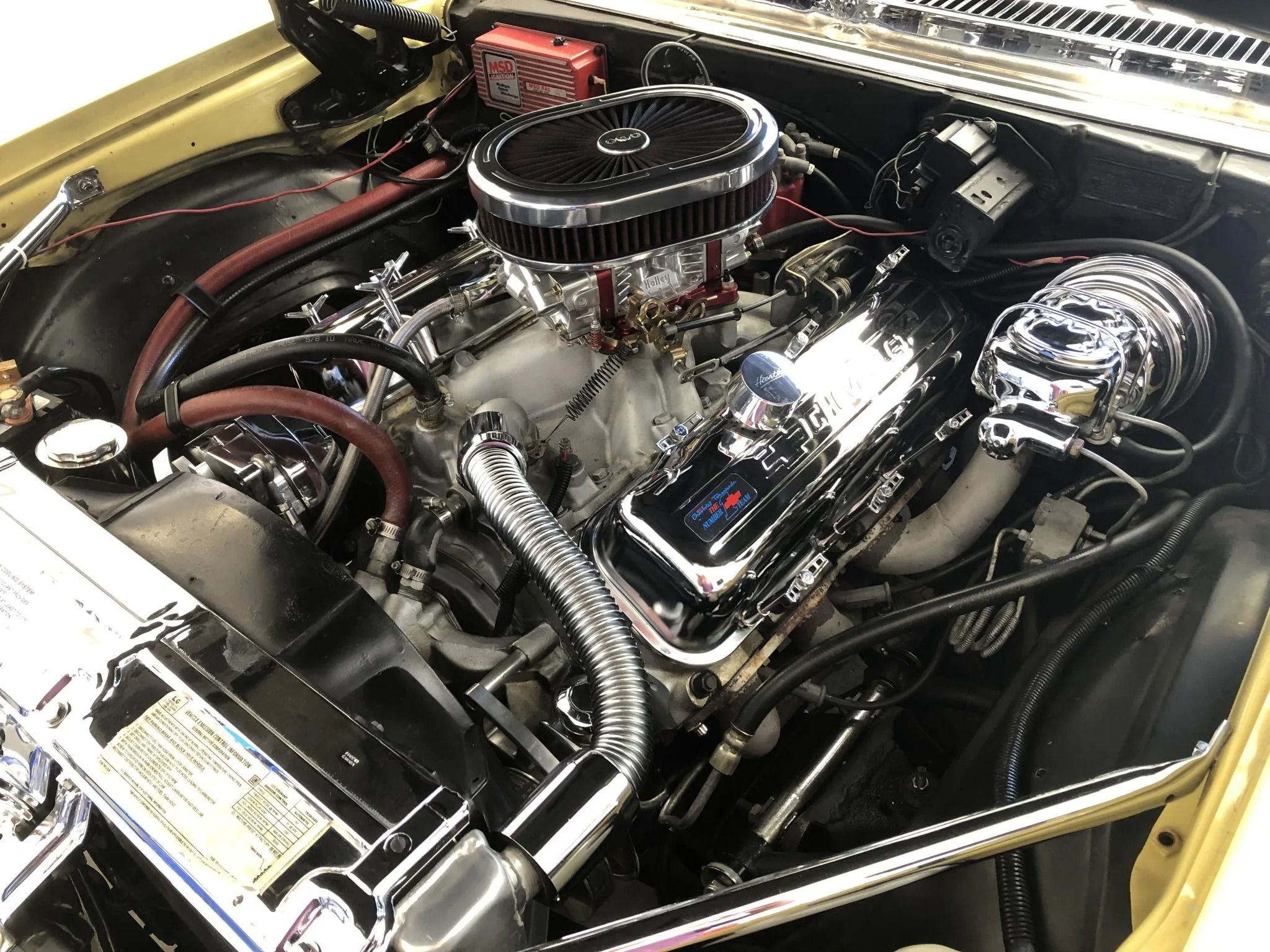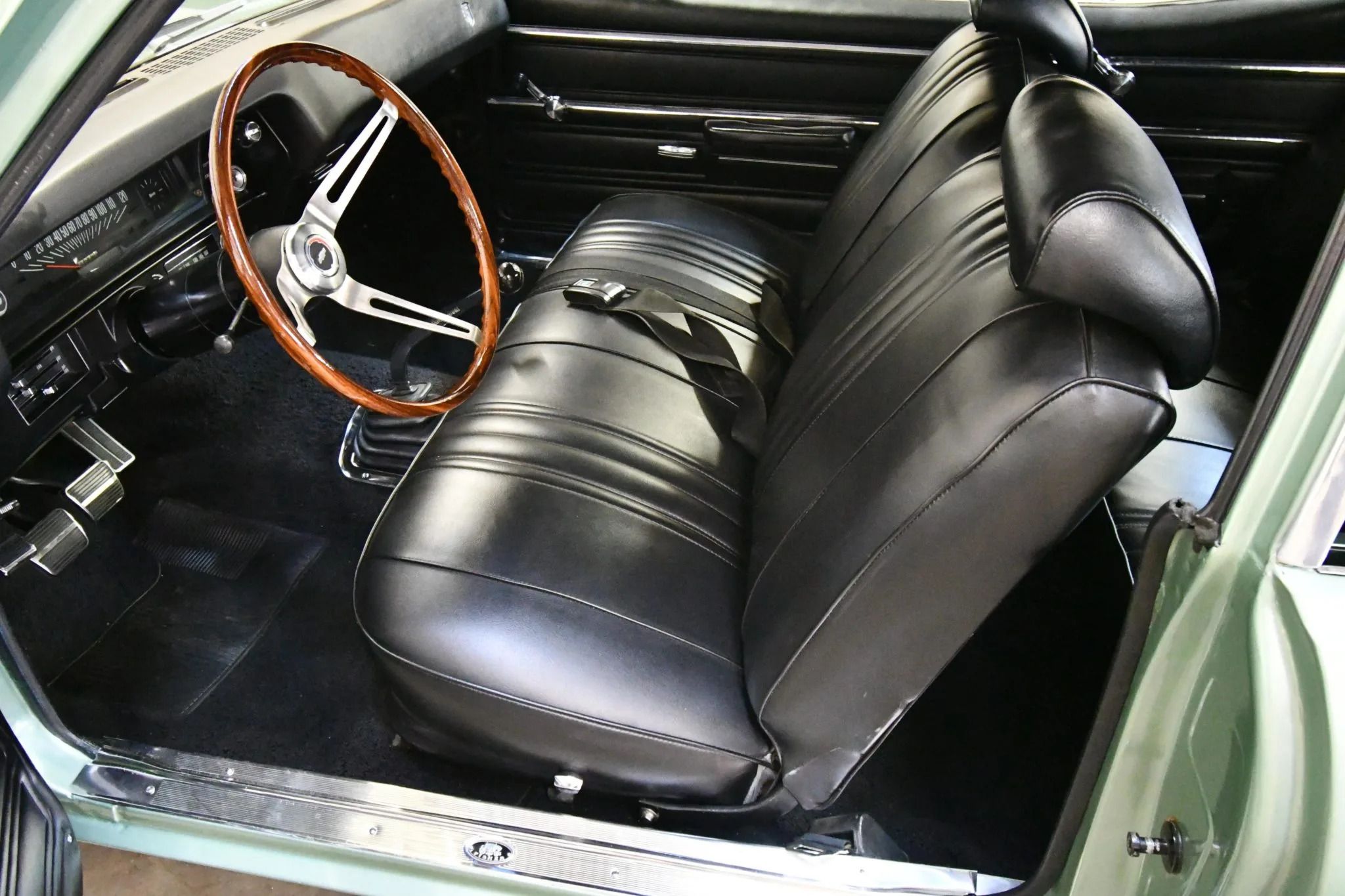The introduction of the Chevrolet Nova in 1968 marked a complete restyle from previous generation models. The body was wider, lower, and sleeker, incorporating the trendy “long-hood, short-deck” body style characteristic of many cars at the time, including the exceptionally successful Ford Mustang. The contemporary semi-fastback styling matched that of the all-new Chevelle, but with a slightly shorter overall length.
Chevrolet discontinued the Nova hardtop coupe, convertible, and wagon, offering only a two- and four-door sedan, and a two-door hatchback model.
During the six-year third generation, the Nova exterior remained unchanged except for minor mods to the front end and the addition of government-required 5 mph bumpers on the 1973 and 1974 models.
However, more significant than the style changes was the return of the Nova to its roots as a basic, affordable compact car. While the Nova SS had grown into a pony/muscle car over the first two generations, it became a sporty car practical enough as a daily driver during the third generation.
1968-1974 Chevrolet Nova (Third Generation)
- Fuel efficient six-cylinder models producing 100 hp
- SS models available with 396 V8 big block producing 375 hp
- Optional front disc brakes, heavy-duty clutch, rally wheels, and Positraction
- Engine/Motor: 250 CID six-cylinder/ 396 V8 big block
- Horsepower: 100 hp/375 hp
- Torque: 175 lb-ft/415 lb-ft
- Drivetrain: RWD
- Transmission: three-speed manual, three-speed Turbo-Hydramatic, M-21 close-ratio four-speed manual, M-22 four-speed manual
- long-hood, short-deck stylish design
- Fuel-efficient six-cylinder models
- Nova SS equipped with a 295 hp V8 engine
- No wagon and two-door sedans offered
- Air conditioning offered only as an option
The Nova Returns To Compact Car Power Levels
In 1968, the RWD Nova started the third generation as a legitimate muscle car, offering more power than the previous generation. At the top-end, Chevrolet offered the 350 V8 with 295 hp, but the 396 V8 big block with a big Holley four-barrel carburetor on an aluminum intake manifold, an 11:1 compression ratio, solid lifters, and free-breathing heads generated 375 hp.
Chevrolet changed the SuperSport from a trim option to a performance package producing 5,571 SS coupés for 1968. The package included simulated hood air intakes, a black-accented grille, tail, and SS badges.
The Base Nova SS offered a 295 hp 350 cu in V8 engine along with performance hardware including a heavy-duty suspension. For the power-hungry buyer, Chevrolet offered the SS package with the big-block 396 cu in rated at 350 bhp and 375 bhp at 5600 rpm and 415 lb-ft of torque at 3600 rpm.
Transmission options for both 396 engines included the three-speed Turbo-Hydramatic 400 automatic transmission, the M-21 close-ratio four-speed manual, or the heavy-duty M-22 "Rock Crusher" four-speed manual.
While Chevrolet provided special order COPO Camaros and Chevelles for buyers looking for more power with an even bigger engine, the same option was not available on a Nova from the factory. However, alternative outlets such as the Don Yenko dealership ordered factory Nova Super Sports with a 375 horsepower 396 cubic-inch V8 and replaced it with a 425-hp 427 cubic-inch engine.
Yenko coupled the powerful Novas with a Turbo 400 with Hurst Dual-Gate shifter or the close-ratio Muncie four-speed with a Hurst shifter.
Consumer demand for high-performance cars waned in the 1970s due to the oil crisis, and by 1974 Chevrolet responded with Nova models offering less power but better fuel efficiency.
The auto manufacturer eliminated the 307 CID V8 engine option and offered the standard Nova with the 250 CID six-cylinder engine that produced 100 horsepower to a buying public concerned with spending at the gas pump. Buyers could order the six-cylinder with a three-speed manual, Torque-Drive, Powerglide, or the Turbo 350 three-speed automatic.
For buyers insisting on a V8 mill, Chevrolet still offered the 350 CID V8 engine but with a much lower output, either 145 hp or 185 hp, and better fuel efficiency.
While the Nova was originally built to compete with the compact Ford Falcon (produced from 1960 to 1970), competition also came from other GM divisions in the form of the rebadged 1971 Pontiac Ventura, 1973 Buick Apollo, and 1973 Oldsmobile Omega.
Fuel Efficiency Takes Precedence Over Performance
In 1968 few muscle cars could match the lightweight Nova’s performance when fitted with the 396 cubic inch engine developing 375 hp. The Don Yenko version fitted with an 11.0:1 compression L72 427 CID engine producing 450 hp was even faster. The upgraded Nova track-tested 0 to 60 mph in a mere 5.1 seconds at 120 mph and achieved a sub-11 second quarter-mile time.
The third-generation base model Novas offered handling characteristics typical of a compact car, sufficient for driving to the local grocery store but inadequate for handling sharp turns on a mountain road.
However, Chevrolet offered upgrades for the SuperSport model. In 1969, the standard Chevy Nova SS package featured a special suspension, power front disc brakes, and red stripe F70x14 tires. Optional performance enhancements included a limited-slip differential for $43 and fast-ratio power steering for $84.
By the end of the third generation in 1974, Nova sales were showing the impact of the oil crisis on buyer preferences. Interest in fuel-efficient cars surged while sales of gas-guzzling muscle cars declined. According to NovaResource, in 1974, Chevrolet produced a record 390,537 cars of which only 21,419 were SuperSport models, compared to 35,542 SuperSport models produced the previous year.
Third-Generation Nova Prices Lower Than Second-Generation
Resale prices for all third-generation Novas and especially the SS models are typically lower than those of the second-generation.
While factory 1966-1967 Chevrolet Nova SS models equipped with a 327-cubic-inch, 350-hp Turbo-Fire V-8 often sell in the $40,000 to $50,000 range, third-generation Nova SS models bring prices in the $30,000 to $40,000 range.
The standard Novas with six-cylinder engines sell for much less. According to J.D. Power, a 1974 Chevrolet Nova 2-Door Coupe with an original MSRP of $2,919, today has an average resale value of $8,550, a low of $4,200, and a high of $20,700.

